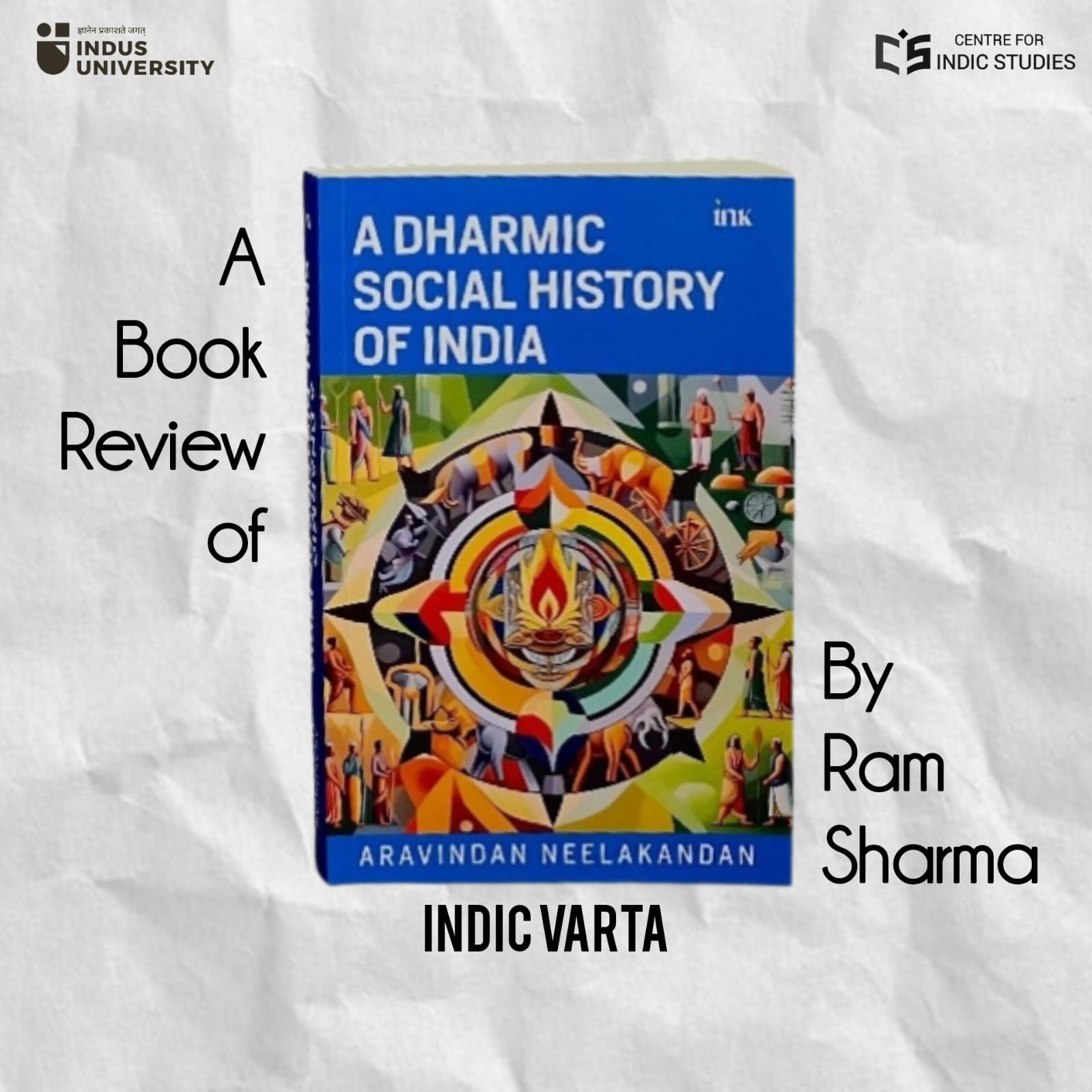- Visitor:28
- Published on:
A Book Review of “Cynical Theories: How Activist Scholarship Made Everything about Race, Gender, and Identity and Why it Harms Everybody”
Postmodernism was particularly skeptical of science and other culturally dominant ways of legitimizing claims as “truths” and of the grand, sweeping explanations that supported them. It called them metanarratives, which it viewed as a kind of cultural mythology and a significant form of human myopia and arrogance.

Introduction to the review:
Have you noticed any feminist being called out for “bigotry” and “Islamophobia” for not taking “intersectionality” of Hijabi Muslim women into account based on their unique religious and cultural identity? Have you seen the same Muslim feminists protest against the “oppressive social constructs” of modesty and morality when it comes to other religions and societies? You must have wondered how Feminist movement can be used to attack religion and traditions at one hand and how by giving it an “intersectional” postmodern turn it can also be used to defend the practices and traditions of another religion (in the name of intersectionality and allyship for uniquely positioned identity) and which would have otherwise been labelled as oppressive, regressive, patriarchal and misogynist based on which religion is in question? Or have you ever noticed any news headline where a person was accused of fatphobia for suggesting that obesity can lead to health issues and hence should be addressed by taking measures to lose weight? Or have you ever come across anyone being accused of “ableism” for only trying to suggest that physical disability is “disability” (really) and not a mere social construct imposed by the society on an individual?
This hostility and cynicism of self-styled social justice activists and scholars towards other people who might be liberals, feminists and even activists themselves must have left you with certain questions. What explains this behavior of these social justice warriors, their snowflake tendencies of taking offense for anything and everything, an attitude of policing language and speech to an extent of stifling it completely? If these questions have crossed your mind then Cynical Theories is exactly the book for you. The authors of this book, Cynical Theories have taken up the mettle to explain this new phenomenon in academia, scholarship, activism. The phenomenon of the theory of postmodernism, its application in social justice scholarship and its influence and stronghold over the new age social justice activism. Interestingly, being advocates of modernity and liberalism themselves, the authors it is the extremities of postmodernism that they find problematic.
The book, Cynical Theories has been co-authored by Helen Pluckrose and James Stephen Lindsay. Helen Pluckrose is a British social justice critic favoring liberal ethics. James A. Lindsay is a cultural critic and a mathematician from the USA. As the subtitle of the book, ‘How Activist Scholarship Made Everything about Race, Gender, and identity and Why it Harms Everybody’ suggests, the authors talk about the cynicism with which social justice theory and applied postmodernism look at the society, and how social justice warriors taking inspiration from it pursue activism and why it harms every stakeholder. However, the book is not just a criticism of postmodernism. The authors have explained postmodernism, its development, its incubation of activism, and reification into absolute truth. Once they have discussed the origin, history, principles, themes and development and manifestations of postmodernism, the authors also elaborate the differences between the liberal approach and postmodernist approach to activism. The authors have dejargonized postmodernism and elucidated its adverse impact on society. They advocate for liberalism without identity politics as an alternative to the menace of postmodernist social justice theory and activism.
Structure of the book:
The book contains ten chapters. It begins with a brief introduction about the subject of the book and their position. Since the authors stand for liberalism, they glorify the emergence of ideas of political democracy, limitations on the power of government, universal human rights, legal equality which was won after from centuries of struggle against theocracy, slavery, patriarchy. They also note that this “philosophical liberalism is opposed to authoritarian movements of all types, be they left-wing or right wing”. According to the authors, the rise of postmodernism has threatened these “gains” of liberalism against the rightwing-movement that has been criticized by the authors. They explain the problem of postmodernism, since its genesis in the 1960s, and its evolution over the last fifty years. Their approach to tradition or religion is the same that the postmodernists have towards modernity and liberalism, or tradition, science and religion. It is a threat to liberalism and modernity posed by post-modernism that concerns our authors. This book is a critique of postmodernism from a liberal and modern standpoint. It is a defense of modernity and liberalism against the post-modernist threat.
Chapter 1: Postmodernism: A Revolution in Knowledge and Power
In this chapter, authors introduce the founders of postmodernism, its terminology, its foundations and examples. Postmodernism, with its first manifestations in the 1940s in the field of art, rose to prominence as a fundamental change in human thought in the 1960s, attributed to French Theorists like Michel Foucault, Jacques Derrida, and Jean-Francois Lyotard. They are called the architects of the “Theory”. The writers state that while postmodernism is difficult to define by design and notoriously difficult to summarize, it can be understood as a reaction and rejection of modernism or modernity. It “was and is a multifaceted phenomenon, encompassing vast tracts of intellectual, artistic, and cultural terrain”. It morphs into various theories, activism, identity politics to make itself applicable. Its defining features are cynicism and skepticism. This radical skepticism of postmodernism was very different from the reasonable cultural skepticism which according to the authors was an important factor to the development of scientific and Enlightenment thought. It was because of collapse of empires, rise in immigration of former subjects to the West, that “prompted the leftist intelligentsia to pay more attention to racial and cultural inequalities and, particularly, to the ways in which structures of power had contributed to them”. The post war trauma of Europe gave rise to Leftwing skepticism towards liberalism, science, Marxism, technology, which according to them allowed rise of fascism and the consequent cataclysmic results. “Postmodernism was particularly skeptical of science and other culturally dominant ways of legitimizing claims as “truths” and of the grand, sweeping explanations that supported them. It called them metanarratives, which it viewed as a kind of cultural mythology and a significant form of human myopia and arrogance”.
The authors elaborate and explain the four pillars of postmodernism as given by Walter Truett Anderson in 1996, with examples and by citing the postmodernist theorists.
“1. The social construction of the concept of the self: Identity is constructed by many cultural forces and is not given to a person by tradition;
2. Relativism of moral and ethical discourse: Morality is not found but made.
3. Deconstruction in art and culture: The focus is on endless playful improvisation and variations on themes and a mixing of “high” and “low” culture; and
4. Globalization: People see borders of all kinds as social constructions that can be crossed and reconstructed and are inclined to take their tribal norms less seriously.”
Based on this they inform us that according to postmodernist knowledge, truth, meaning, and morality are culturally constructed and relative products of individual cultures. The postmodernists assert that none of these products of one culture possess the necessary tools or terms to evaluate the “cultural constructs” of others. Reality is ultimately the product of our socialization and lived experiences, as constructed by systems of language. There is no objective reality or truth. In fact, objective knowledge cannot be achieved, there can be no universal truth and ironically this postmodernist idea in itself is taken as universal truth by the postmodernists.
The authors then move on to elaborate the two principles and four themes of postmodernism which are:
Two principles:
“• The postmodern knowledge principle: Radical skepticism about whether objective knowledge or truth is obtainable and a commitment to cultural constructivism.
• The postmodern political principle: A belief that society is formed of systems of power and hierarchies, which decide what can be known and how.”
The four major themes of postmodernism are:
1. The blurring of boundaries
2. The power of language
3. Cultural relativism
4. The loss of the individual and the universal
According to the author these six major concepts allow identifying postmodern thinking and help understand how it operates. They assert that these are the core principles of Theory and that they have remained largely unchanged “even as postmodernism and its applications have evolved from their deconstructive and hopeless beginnings to the strident, almost religious activism of today”.
Chapter 2: Postmodernism’s Applied Turn: Making Oppression Real
In this chapter, the authors draw out the journey of how the postmodernist theory transforms from mere nihilist, pessimistic deconstructive exercise to a field of activism where they implement their Theory. It retains its basic principles and themes, and skepticism against science, knowledge, language; The Theory used its underlying concepts in the period between 1980s and 2010 to yield entirely new fields of scholarship known as the “Social Justice scholarship,”. Postmodernism and Social Justice Scholarship co-opted the notion of social justice from the civil rights movements and other liberal and progressive theories.
The new forms of theory that arose within postcolonialism, black feminism (a branch of feminism that is equally focused and gender), intersectional feminism, critical race (legal) Theory, and queer Theory that sought to describe the world critically to change it, were used by activists to implement postmodernism. This novel application of theory made it accessible to activists and the general public and assisted Applied postmodern ideas escape the four walls of academia, unlike the original postmodernism.
The next five chapters discuss different activist scholarship fields that reify postmodernism by adopting its theory.
Chapter 3: Postcolonial Theory: Deconstructing the West to Save the Other
The chapter discusses postcolonial theory whose main aim is “deconstruction” of the West, and derives directly from postmodern thought. Postcolonial Theory had a specific purpose- decolonization: “the systematic undoing of colonialism in all its manifestations and impacts”. While postmodernism was concentrated on dismantling modernity, postcolonialism restricts this aim to dismantling colonialism.
They say that postcolonialism has a prominent place for both the postmodern knowledge principle, which rejects objective truth in favor of cultural constructivism, and the postmodern political principle, which perceives the world as constructed from systems of power and privilege that determine what can be known. The four primary themes of postmodern thinking are found throughout postcolonialism. But what is wrong in using them for dismantling colonialism? The authors advocate for using liberalism for decolonization instead of postcolonialism by critically comparing the liberal and postmodern postcolonial approaches. The postmodern approach, while considering them oppressive, accepts the Orientalist binaries instead of overcoming them. On the other hand, the liberal mindset rejects arrogant colonial claims. The authors assert that postcolonial theory’s disparagement of science and reason as provincial Western ways of inquiry threatens the foundations of advanced contemporary societies and impedes the progress of developing ones. The chapter also discusses the practice of decolonizing and research justice.
Chapter 4: Queer Theory: Freedom from the Normal
The focus of this chapter is queer theory: its history, development, fundamentals, aim, working, the postmodernist underpinnings, and how it grew out of radical feminist, gay, lesbian study groups. Queer theory considers these categories artificial as its postmodernist framework makes it radically skeptical of any biological reality. Every time that language (classification) constructs a sense of “normal” it will be followed by oppression. The authors explain how Queer theory employs the two themes and four principles of postmodernism. and queer Theory is also a political project with an aim to disrupt any binary position. It implores by defying any simple categorization. Hence, the main and general agenda is to challenge normativity, just like other postmodern theories. The authors claim that Queer theory is the purest form of applied postmodernism.
Chapter 5: Critical Race Theory and Intersectionality: Ending Racism by Seeing It Everywhere, Always
This chapter discusses Critical Race Theory. It mentions the origins of the Critical race theory, what it means and how it has co-opted postmodernism. The authors inform that Critical race theory holds that race is a social construct that was created to maintain white privilege and supremacy. The chapter discusses the early contributions of former American slaves like Sojourner and Frederick Douglass in the nineteenth century in fighting racism. But authors are critical of the fact that despite victories of the Civil Rights Movement, when discrimination on the grounds of race became illegal and attitudes about race changed remarkably, the longstanding narratives about racism and racial supremacy didn’t change and this is when the Critical race Theory was designed to highlight, and address them. It arose in the 1970s. The authors explain the significance of the term critical in Critical race theory and how adopting critical approaches eventually led to its adoption of the postmodernist theory. Critical Race theory in both its forms, materialist and postmodern, reacted against liberalism and stressed a form of radicalism. They also mention that the Critical Race Theory has expanded out of legal studies into many disciplines concerned with Social Justice. In the rest of the Chapter the applied postmodernist facet of the Critical Race, its adoption of the idea of intersectionality and how intersectionality and applied postmodernism come together in the critical race theory are further explored. They critique Critical race theory for its internal complexity and single-minded focus on oppression and the riddles of intersectionality which make this theory defeat its purpose. Even when the Critical Race Theory aims to achieve noble ends. It makes people more aware of race because it assumes that racism is normal and permanent. The authors also criticize this approach from a liberal standpoint. With the presumption that racism is incurable, omnipresent and eternal, the theorists stop at discovering and highlighting its manifestations. To this aim, the consideration of racism is solely on the testimony of the marginalized, which authors perceive as a threat to the social fabric.
Chapter 6: Feminisms and Gender Studies: Simplification as Sophistication
This chapter discusses the postmodernist turn that feminism has taken up around the turn of the millennium. The authors tell how feminism has developed an “increasingly sophisticated” approach called “intersectionality,”. They assert that the intersectional approach has replaced the liberal, materialist, and radical approaches that had characterized feminism earlier. They contrast the previous feminist scholarship with the intersectional feminist scholarship. The authors also introduce Gender Studies in which scholars use lenses of genders analysis that draw on postmodern conceptions of knowledge, power, and discourses. They consider gendering oppressive. At the end, the shift in feminism, its scholarship, and activism, and its implications are summarized.
Chapter 7: Disability and Fat Studies: Support-Group Identity Theory
The chapter discusses the history, aims, postmodernist turn and consequent implications of both Disability Studies and Fat Studies from a liberal and modernist perspective.
The chapter informs that Disabled activism began in the 1960s along with other movements like Gay Pride, second-wave feminism, civil rights movement with an aim to make society accommodating of disabled people in order to improve their quality of life. But, after its postmodernist turn, disability studies look at ability as a social construct and disability as a status imposed upon those with impairments. Thus, a person is disabled only because of societal expectations. Fat studies suffer a similar fate in which obesity is seen as a social construct and not a medical condition which can be addressed. The authors critique it for the cynicism it holds against any attempt to treat curable disabilities or obesity, when the sustained condition may have adverse health effects for the people it claims to fight for. They conclude that a modernist approach towards both the issues could be more helpful.
In the next chapters the authors focus on Theory, that treat postmodernist assumptions as objective truths of realities.
Chapter 8: Social Justice Scholarship and Thought: The Truth According to Social Justice
The discuss the reification, a concept in which abstract concepts are treated as real, of postmodern theory and its principles and themes through social justice scholarship, its genesis and implications to the society. They analyze the role of the social justice scholarship in making postmodern principles and themes real, and characterize the development of postmodernism in different phases. The authors observe that, “Social Justice Theorists have created a new religion, a tradition of faith that is actively hostile to reason, falsification, disconfirmation, and disagreement of any kind“. Theory in the form of Social Justice has left the universities and has spread much beyond it through social media and activist journalism. It has become a significant cultural force with majorly a negative influence and hence it cannot be ignored. The authors observe that, “Social Justice Theorists have created a new religion, a tradition of faith that is actively hostile to reason, falsification, disconfirmation, and disagreement of any kind“.
The last two chapters of the book discuss the implications of reification of postmodernism, its spread, and the solutions.
Chapter 9: Social Justice in Action: Theory Always Looks Good on Paper
The chapter discusses the influence of postmodernism on our lives using a few examples and why it is important to assess the extent and the impact. Even Though the problem of postmodernism begins in universities, society through Social Justice scholarship the students who graduate and reach influential positions in corporate, academic, administrative spheres, pass down these values to the society, which have catastrophic consequences. Since universities are cultural centers, research institutes, and halls of education, what happens there, what culture is practiced and becomes popular there will inevitably leak out into the world. They remark, “Unlike Vegas, what happens in the university doesn’t stay in the university“. The chapter briefly discusses the risks of institutionalization of social justice which causes imposition of its social constructivist beliefs on various institutions of the society be it the corporate world or medicine.
Chapter 10: An Alternative to the Ideology of Social Justice: Liberalism without Identity Politics
In this last chapter of the book the authors offer an alternative to the Postmodern Theory in the form of Liberalism without identity politics. Through comparisons and examples, they try to explain how both of these ideologies are directly at odds with one another. While Liberalism sees knowledge as something we can learn about reality, more or less objectively; Theory sees knowledge as completely created by humans—stories we tell ourselves, largely in the unwitting service of maintaining our own social standing, privilege, and power. While Liberalism accepts criticism, even of itself, and is therefore self-correcting; Theory, on the other hand cannot be criticized. Liberalism believes in progress; Theory is radically cynical about the possibility of progress. Liberalism according to the authors is inherently constructive while Theory is inherently corrosive. The authors state that even though Liberalism is not perfect, it is nevertheless the antidote to Theory. They define Liberalism and its basic tenets, advocate for freedom of speech in totality. They clarify that it is not only about the right of the speaker to say what she believes, without censorship or punishment, but also about the freedom of speech for the listeners or potential listeners, who may disagree with the speaker. They insist on complete rejection of postmodern political principle because it is a harmful discourse and by gaining undue power and masquerading as legitimate knowledge, it can damage the society and harm people.
Asserting that illiberalism cannot be fought with illiberalism, they suggest fighting postmodernism through rigorous scholarship, debate, discussion and criticism, and preventing it from becoming an absolute and institutionalized truth.
They use a two-pronged approach to tackle reified postmodernism.
First, by opposing institutionalization of its belief system and defending people’s right to disbelieve in Social Justice, without incurring any form of punishment.
Second, by fairly battling the idea in Social Justice. They claim that bad ideas can be defeated by repression but by engagement in the marketplace of ideas to their defeat. This will lead to their natural death through irrelevance.
The authors conclude by exuding confidence that maintaining commitment and belief in liberalism in the face of Theory is possible and it will be beneficial. They reassert that liberalism, both political and in terms of knowledge production, is the remedy for the postmodern knowledge principles. They close the chapter with a few examples of how one can recognize social injustice, while rejecting the solutions it proposes.
The reader however should know that modernity questioned faith which gave main meaning life and this created a void that was understandably filled with a meaningless activism of outrage known as postmodernism when the promised paradise of liberty, equality and fraternity, after a long time was nowhere seen on earth. So though the authors defend liberalism and modernity against postmodernism, with respect to Bharata and considering human nature, liberalism cannot be the indic approach. Still the book gives a detailed look of the brave new world that postmodernism is out there to create and which deserves a serious analysis.
Center for Indic Studies is now on Telegram. For regular updates on Indic Varta, Indic Talks and Indic Courses at CIS, please subscribe to our telegram channel !
- 14 min read
- 0
- 0










